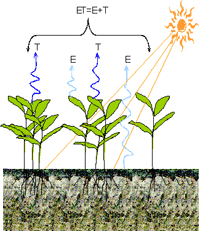Agricultural Research Division of IANR

West Central Research and Extension Center, North Platte
Date of this Version
2017
Citation
Invasive Plant Science and Management 2017 10:215–231
Abstract
As researchers and land managers increasingly seek to understand plant invasions and the external (climate) and internal (plant genetics) conditions that govern the process, new insight is helping to answer the elusive question of what makes some invasions successful and others not. Plant invasion success or failure is based on a combination of evolutionary and ecological processes. Abiotic (e.g., climate) and biotic (e.g., plant competition) conditions in the environment and plant genetics (e.g., fitness) combine in either decreasing or increasing invasion, yet it has proven challenging to know exactly which of these conditions leads to success for a given species, even when a wealth of empirical data is available. Further, current regional distribution models for invasive plant species rarely consider biotic and fitness interactions, instead focusing primarily on abiotic conditions. The crucial role of all three factors (climate dynamics, invader fitness, and ecosystem resistance) must not be ignored. Here we construct a three-factor invasion framework from which we develop conceptual models using empirical studies for yellow starthistle, nonnative common reed, and musk thistle, three dissimilar but commonly occurring invasive plant species in North America. We identify how components of the invasion process—rapid population increase, established local dominance, and rapid range expansion—are influenced by ecosystem resistance, invader fitness, and/or climate dynamics, a set of broadly defined factors for each of the three invasive plant species. Our framework can be used to (1) establish research priorities, (2) address gaps in theoretical understanding, and (3) identify invasion process components that can be targeted to improve management. Building on previous models, our unifying framework, which can be used for assessing any invasive plant species having sufficient empirical data, simultaneously shows the influence of ecosystem resistance, invader fitness, and climate dynamics factors on the invasion process. Nomenclature: Common reed, Phragmites australis (Cav.) Trin. ex Steud.; musk thistle, Carduus nutans L.; yellow starthistle, Centaurea solstitialis L.


Comments
© Weed Science Society of America, 2017